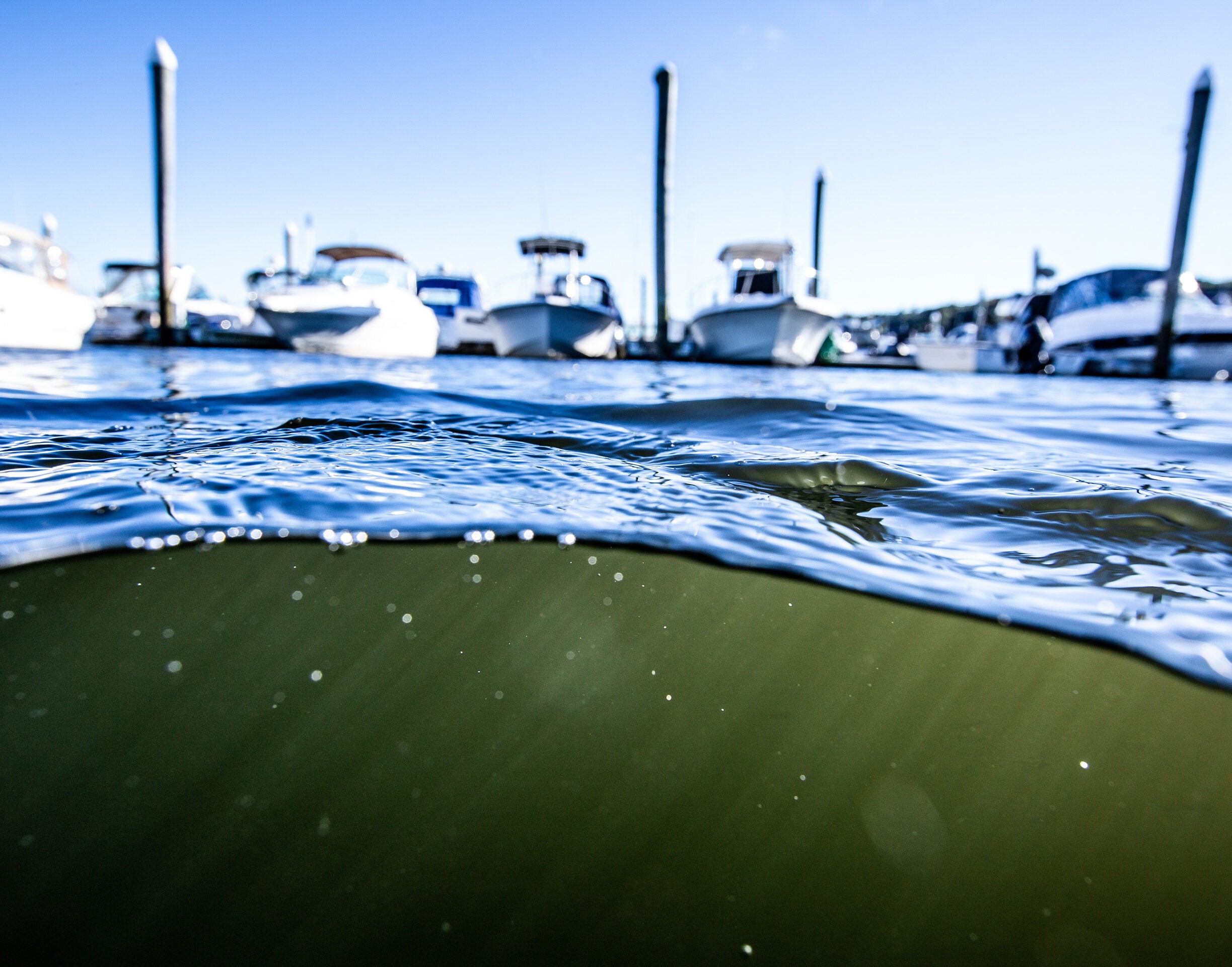NARRAGANSETT, R.I., Oct. 15, 2018 — Oceanographers, engineers and other marine scientists from the University of Rhode Island, in partnership with researchers from seven other institutions in the state, are preparing to deploy an array of instruments in Narragansett Bay as part of a new effort to monitor and predict the Bay’s health in the face of environmental changes.
The project, called the Narragansett Bay Observatory, will use a collection of state-of-the-art sensors and water sampling technologies to quantify chemical compounds and marine organisms, the presence of which can affect plants and animals in good or bad ways.
“The health of Narragansett Bay needs to be better understood in the face of both natural and human stressors,” said Lewis Rothstein, an oceanography professor at URI’s Graduate School of Oceanography and one of the leaders of the development of the observatory. “The observatory will help obtain the information we need to understand and predict the health of the Bay, which is so essential to the well-being of Rhode Island.”
The oceanographic instruments will be deployed in November in three locations: near the Castle Hill Lighthouse in the East Passage, to gather information about water circulating into the Bay from Rhode Island Sound; near Fox Island in the West Passage, where URI has been collecting data for more than 60 years; and on the bottom of Greenwich Bay, though that device can also be deployed elsewhere as data needs arise.
The instruments will collect data on nutrients such as nitrogen and phosphates that are used by plankton and other organisms in their life cycle. Water samples will also be collected to examine the complex interactions among nutrients and marine species.
“The Greenwich Bay device is called a benthic lander, which is an autonomous measuring platform,” Rothstein said. “It sits on the bottom and samples the water from the benthos, measuring the exchange of nutrients and other chemical, physical and biological properties between the sediments and the water.”
The platform near Castle Hill Lighthouse has been designed and built at URI to pump water from three different depths through its sensors, which analyze the water for nutrients, plankton concentrations and other ecological properties. Other characteristics of the water will also be collected, such as temperature, salinity and currents.
The instruments will be programmed to communicate their data among the three platforms, creating a sustainable observatory and a real-time response network for scientists. If one instrument measures too much nitrate in the water column, for instance, a nearby biological sensor can then be examined to determine if a spike in a potentially harmful phytoplankton population is also occurring.
The data collected by the instruments — as well as from existing instruments measuring river water and wastewater entering the Bay — will be used to predict the effects of global warming and other climate-related issues, as well as to study human impacts on coastal ecosystems.
The data will be housed at the Rhode Island Data Discovery Center, an online portal that will enable researchers and the public to see and use the information. A map on the website will indicate the conditions at each location and include historical data, graphs and animations.
According to Rothstein, the Narragansett Bay Observatory is one of three elements in a project funded with a $19 million grant from the National Science Foundation’s Established Program to Stimulate Competitive Research and an additional $3.8 million from the Rhode Island Science and Technology Advisory Council. Other elements in the project focus on the creation of computer models for predicting how environmental conditions will change, based on the data collected by the instruments, and the development of new sensors and devices for collecting data in the future.
The grants also fund related research by dozens of graduate students as well as internships for undergraduates statewide. Seven universities and colleges in Rhode Island are partnering on the project, with URI as the lead institution. More than a dozen scientists from the URI Bay Campus are involved.

